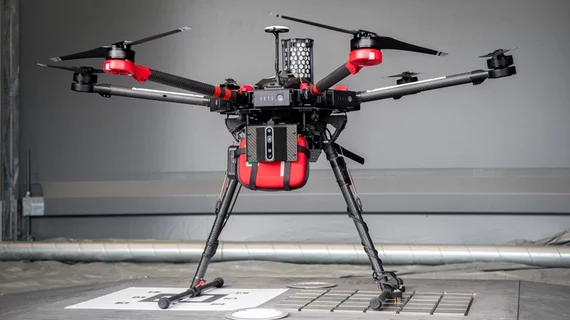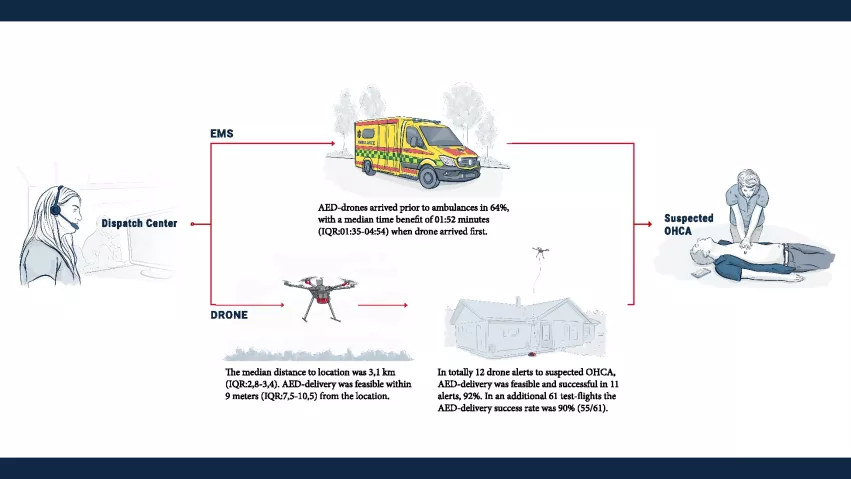Using drones to deliver automated external defibrillators (AEDs) is an effective way to reach patients suffering from out-of-hospital cardiac arrest (OHCA), according to a new analysis published in European Heart Journal.[1]
In fact, the study’s authors found, drones often arrive to the scene faster than an ambulance.
“Drones with the ability to carry AEDs represent a promising novel method to deliver AEDs,” wrote lead author Sofia Schierbeck, MD, a resuscitation science specialist with the Karolinska Institute in Sweden, and colleagues. “However, this has never been evaluated in a real-life emergency setting. Theoretical studies and simulations have confirmed the theoretical timesaving potential. Furthermore, recent simulations of AED delivery and bystander interaction within the line of sight in rural areas have confirmed the potential of an AED drone system, and clinical real-life studies have been warranted for a long time.”
To finally provide a real-life perspective to this oft-discussed topic, Schierbeck et al. studied the impact of drone deployment during 12 cases of OHCA from June to September 2020 within controlled airspace in Sweden. The remote pilot responsible for the drone went through multiple training courses. The drones in question, DJI Matrice 600 Pro hexacopter drones modified to deliver AEDs, were stored in special hangars operated by remote control.
In all instances, an ambulance was also sent to the patient’s location.
Overall, drones successfully delivered the AEDs in 92% of cases. The median distance traveled was nearly two miles. The drones arrived faster than the ambulance in 64% of cases, and the median time benefit for those cases was nearly two minutes.
Pilots also took the drones out for an additional 61 test flights, achieving a success rate of 90%.
“In this early pilot study, AED-equipped drones could be dispatched in parallel with the ambulance to the scene of OHCAs with a substantial time benefit in cases where the drone arrived first and with a successful delivery rate of 92%,” the authors wrote. “Further technological improvements are needed to increase dispatch rate.”
Related Heart Rhythm Content:
Fitbit’s latest AFib algorithm receives FDA clearance, will be available ‘soon’
VIDEO: Lowering mortality rates from infected EP implantable cardiac devices
Abbott’s single-chamber leadless pacemaker gains FDA approval
VIDEO: 4 predictions on key cardiac technologies for the coming years


